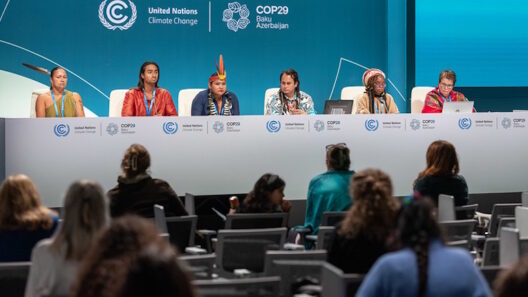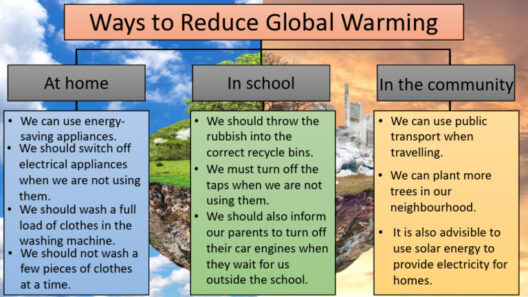As the looming threat of climate change becomes increasingly palpable, the significance of individual actions cannot be overstated. Global warming, primarily driven by the accumulation of greenhouse gases, necessitates immediate and sustained efforts to curtail emissions. While the challenge appears insurmountable, there exists a promising shift in perspective—households collectively possess considerable power to effect change. This exploration contemplates actionable measures to lower emissions and highlights how your home serves as a catalyst for climate action.
Firstly, energy consumption within homes constitutes a substantial portion of overall greenhouse gas emissions. Transitioning to renewable energy sources is an imperative step. Homeowners can consider installing solar panels, thereby harnessing solar energy to power their residences. Not only does this initiative reduce reliance on fossil fuels, but it also minimizes electric bills over time. Furthermore, harnessing wind energy through small wind turbines or advocating for community-based renewable projects can amplify this shift towards sustainability.
The fundamental principle of energy efficiency should not be overlooked. By optimizing energy use through simple modifications, households can significantly mitigate their carbon footprint. Utilize Energy Star-rated appliances where applicable. These devices are designed to consume less energy without sacrificing performance. Additionally, consider employing smart thermostats that learn your habitude, optimizing heating and cooling systems tailored to your daily schedule, consequently reducing unnecessary energy expenditure.
A pivotal aspect often neglected in the quest for energy efficiency is proper insulation. Homes should be fortified against thermal leaks; caulking and weather stripping around windows and doors can deter temperature fluctuations. Additionally, insulating attics and walls prevents the loss of heated or cooled air, subsequently lessening the workload on heating and cooling systems. This practice is not only economically prudent but also environmentally responsible.
The concept of minimalism also plays a crucial role in combating global warming. Embracing a lifestyle that prioritizes quality over quantity fosters a reduction in resource consumption. By purchasing only what is necessary and opting for durable, sustainable products, individuals can lessen the environmental burdens associated with manufacturing, transportation, and disposal. This thoughtful approach extends to clothing, furniture, and electronics, urging a conscientious evaluation of consumption patterns.
Moreover, the transportation sector account for a significant proportion of global emissions, thus altering personal travel habits can yield immediate benefits. Consider adopting alternative modes of transportation whenever feasible—walking, cycling, or utilizing public transit reduces dependency on individual vehicles. For longer commutes, investigate carpooling or forming convenient ride-share services with neighbors. Moreover, if purchasing a vehicle is inevitable, prioritize energy-efficient models, including hybrids or electric cars, which are less polluting and often supported by increasingly accessible infrastructure.
Incorporating sustainable practices extends beyond energy use; it permeates daily habits, including waste management. Households generate substantial amounts of waste that contribute to greenhouse gas emissions, particularly organic waste in landfills. Composting organic materials not only mitigates landfill contributions but enriches garden soil. Moreover, the adoption of a rigorous recycling program ensures materials like plastics, glass, and metals are diverted from landfills, thus significantly decreasing associated emissions from waste processing.
Food choices present another avenue for reducing emissions. The agricultural industry is responsible for a considerable share of global greenhouse gas emissions, primarily through livestock production and fertilizer use. Transitioning towards a plant-based diet, even incrementally, can considerably reduce one’s carbon footprint. Sourcing food locally further minimizes emissions tied to transportation, as well as supports community economies and promotes sustainable farming practices.
Introducing flora into your living space can also serve as a vital strategy against climate change. Plants absorb carbon dioxide, thus contributing to cleaner air expediently. Indoor plants enhance air quality while promoting a conducive environment for mental well-being. Furthermore, creating a backyard garden not only yields fresh produce, reducing dependency on store-bought goods, but also fosters biodiversity by offering habitats for various species.
Cumulatively, these changes necessitate a paradigm shift in how we perceive our roles in combating climate change, where every measure counts. Embracing and promoting environmental stewardship at home can create a ripple effect throughout communities. The information and choices shared can serve as powerful tools for inspiring others to take action—discussing sustainable practices with friends and family, advocating for local environmental policies, or initiating community-wide clean-up events are all valid avenues of engagement.
While the specter of climate change is daunting, a collective movement launched from the sanctity of our homes bears promise. By addressing energy consumption, consumption habits, transportation, waste management, food choices, and the integration of nature into our lives, individuals can significantly impact and lower emissions. Each family, each home, matters immensely in this battle. Together, with a commitment to our environment, we can catalyze monumental changes that contribute to a sustainable and equitable future.








